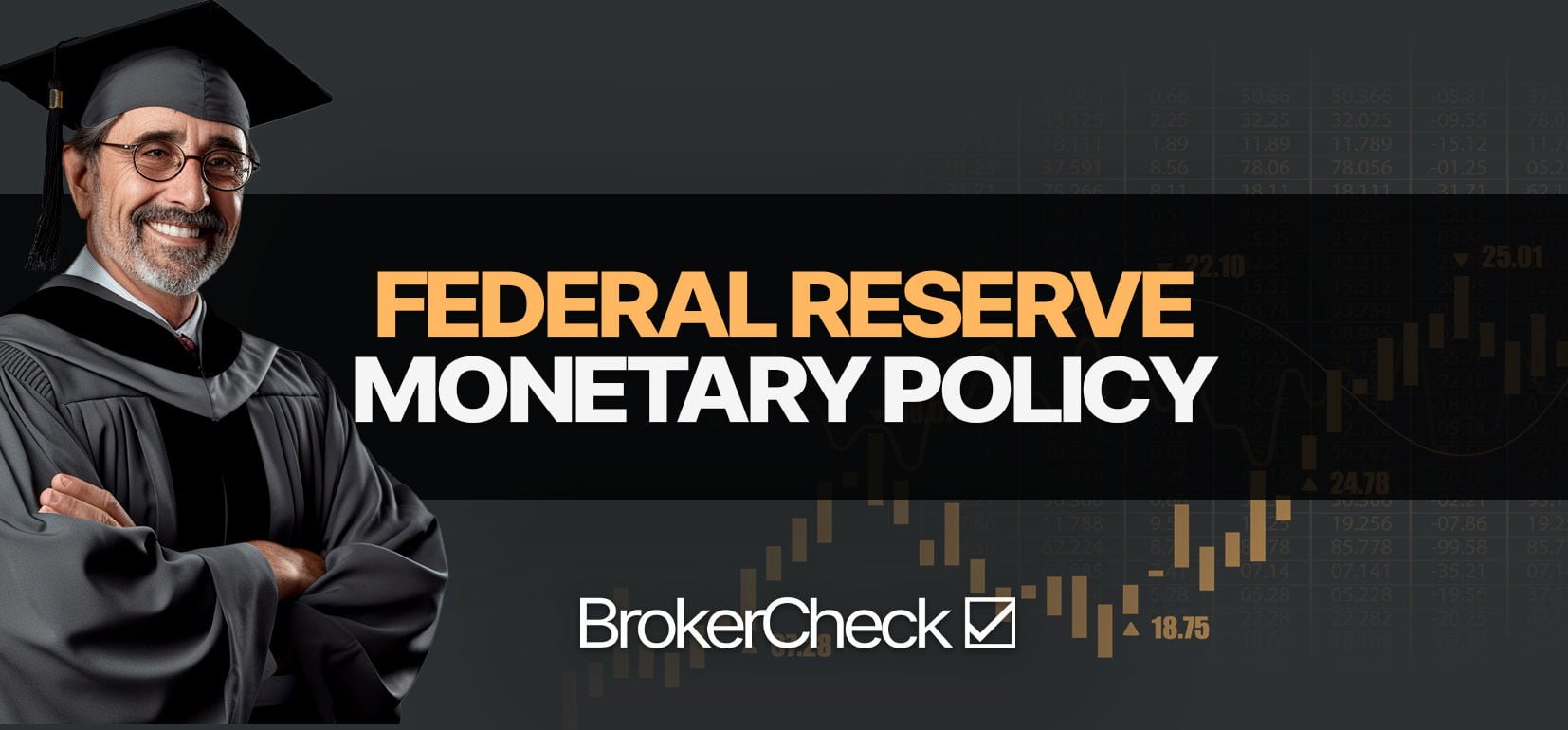1. Understanding the Federal Reserve’s Monetary Policy
The Federal Reserve, often referred to as the “Fed,” wields a powerful tool known as monetary policy. This policy involves the management of money supply and interest rates, orchestrated by the Federal Reserve to stimulate or slow down the economy. The two primary methods the Fed uses are open market operations and setting reserve requirements.
Open market operations involve the buying and selling of government securities. When the Fed wants to increase the money supply, it purchases these securities, injecting money into the economy. Conversely, to decrease the money supply, the Fed sells these securities, pulling money out of circulation.
Setting reserve requirements is another strategy. Banks are required to hold a certain percentage of their deposits in reserve. By adjusting this percentage, the Fed can influence how much money banks have available to lend, which directly impacts the money supply.
 As a forex, crypto or CFD trader, it’s crucial to understand the implications of these actions. When the Fed increases the money supply, it often leads to inflation, which can weaken the US dollar. This could influence the forex market as traders may opt to sell their US dollars in anticipation of a drop in value. On the flip side, a decrease in money supply can strengthen the dollar, making it more attractive to forex traders.
As a forex, crypto or CFD trader, it’s crucial to understand the implications of these actions. When the Fed increases the money supply, it often leads to inflation, which can weaken the US dollar. This could influence the forex market as traders may opt to sell their US dollars in anticipation of a drop in value. On the flip side, a decrease in money supply can strengthen the dollar, making it more attractive to forex traders.
In the realm of crypto and CFD trading, the effects can be equally significant. A surge in inflation could drive investors to seek refuge in cryptocurrencies, potentially boosting their value. Meanwhile, CFD traders might see opportunities in market volatility that often accompanies changes in the Fed’s monetary policy.
- Monitor the Fed’s actions: Any announcements or hints of future policy changes can provide valuable insights for your trading strategies.
- Understand the implications: A grasp of how these policies affect the economy can help predict market movements and guide your trading decisions.
- Stay adaptable: The Fed’s monetary policy can change based on a variety of factors, so it’s essential to stay flexible and ready to adjust your trading strategies.
By keeping an eye on the Fed’s monetary policy and understanding its potential impacts, traders can make informed decisions and potentially capitalize on market shifts.
1.1. The Role of the Federal Reserve
The Federal Reserve, often referred to as the Fed, plays a pivotal role in the world of trading, particularly in the forex, crypto, and CFD markets. As the central bank of the United States, the Fed holds the reins of the country’s monetary policy, wielding significant influence over market conditions and trends.
The Fed’s primary function is to manage the nation’s money supply, a process known as monetary policy. This involves three key tools: open market operations, the discount rate, and reserve requirements.
- Open market operations involve the buying and selling of government securities, which affects the amount of money in the economy. When the Fed buys securities, it injects money into the economy, lowering interest rates and stimulating economic activity. Conversely, selling securities removes money from the economy, raising interest rates and slowing economic activity.
- The discount rate is the interest rate the Fed charges commercial banks for loans. A lower discount rate encourages banks to borrow and lend more, increasing the money supply. A higher rate has the opposite effect.
- Reserve requirements are the amount of funds that banks must hold in reserve against deposit liabilities. Lowering reserve requirements allows banks to lend more, thereby increasing the money supply. Raising them has the opposite effect.
These tools enable the Fed to control inflation, stabilize the economy, and promote maximum employment. But how does this affect trading?
Every decision the Fed makes sends ripples through the financial markets. Changes in the monetary policy can influence the value of the dollar, which directly impacts forex trading. For instance, if the Fed raises interest rates, the dollar typically strengthens, attracting investors looking for higher yields.

In the crypto market, while cryptocurrencies like Bitcoin are decentralized and not directly tied to any government’s monetary policy, the broader market sentiment influenced by the Fed’s decisions can affect crypto prices. For instance, if the Fed’s policy is perceived as risky, investors might flock to “safe haven” assets, including certain cryptocurrencies.
Lastly, in the CFD market, changes in interest rates can affect the cost of holding a position overnight, known as the swap rate. Plus, any major economic changes triggered by the Fed can lead to increased market volatility, providing both risks and opportunities for CFD traders.
Thus, understanding the role and actions of the Federal Reserve is crucial for any trader, as it can provide valuable insights into market movements and potential trading opportunities.
1.2. Types of Monetary Policy
In the world of trading, particularly forex, crypto, and CFDs, understanding the types of monetary policy can be a game-changer. The Federal Reserve (Fed) employs two primary types of policies: expansionary and contractionary monetary policies.
Expansionary monetary policy is typically used during periods of economic slowdown. The Fed will decrease interest rates, making borrowing cheaper and encouraging spending. This influx of capital can stimulate economic growth and lead to a bullish market. Traders can benefit from these conditions, as asset prices often increase.
- For forex traders, a stronger economy often strengthens the national currency.
- Crypto traders might see an influx of investment as investors diversify their portfolios.
- CFD traders can take advantage of price movements in various asset classes, such as commodities, which may be influenced by an expansionary policy.
On the flip side, the contractionary monetary policy is used when the economy is overheating or experiencing inflationary pressures. The Fed increases interest rates to curb excessive spending and slow down economic growth. This policy can lead to bearish market conditions, as asset prices may decrease.
- Forex traders might see the national currency weaken, creating opportunities to profit from downward price movements.
- Crypto traders may experience increased market volatility, which can present both risks and opportunities.
- CFD traders, similar to forex and crypto traders, can leverage these price movements to their advantage.
In both scenarios, understanding the Fed’s monetary policy and its implications can arm traders with the knowledge they need to make informed decisions. It’s a critical piece of the puzzle in the dynamic, ever-changing landscape of trading.
2. Impact of the Fed’s Monetary Policy on Trading
When the Federal Reserve (Fed) alters its monetary policy, it’s akin to a seismic shift in the financial landscape – its ripples are felt across every corner of the globe, and the trading world is no exception. The Fed’s monetary policy primarily revolves around two key aspects: interest rates and money supply.
Interest rates are the cost of borrowing money. When the Fed lowers interest rates, borrowing becomes cheaper, and there’s more money circulating in the economy. This can lead to inflation, and traders might turn to assets like gold or Forex pairs that are traditionally seen as hedges against inflation. Conversely, when the Fed raises interest rates, borrowing becomes more expensive, and the amount of money in the economy might decrease, leading to deflation. In this scenario, traders might flock towards bonds or currencies with higher interest rates.
The money supply is the total amount of currency available in an economy at a particular time. When the Fed increases the money supply, it’s often done to stimulate economic growth. This tends to devalue the domestic currency, making Forex and commodities trading more appealing. On the other hand, when the Fed decreases the money supply, it’s usually to curb inflation. This can strengthen the domestic currency, making Forex trading riskier, while stocks and bonds become more attractive.
2.1. Influence on Forex Trading
When the Federal Reserve (Fed) alters its monetary policy, it sends ripples through the financial markets, and the forex trading arena is no exception. The Fed’s monetary policy primarily revolves around the manipulation of interest rates. When the Fed increases interest rates, the dollar often strengthens. This results in a decrease in the value of other currencies relative to the dollar, making it more expensive for forex traders to buy these currencies.
- Interest Rate Hikes: A hike in interest rates can attract foreign investors looking for higher returns on their investments, leading to an increased demand for the dollar. Consequently, forex traders may see an opportunity to buy the dollar against other currencies, expecting its value to rise.
- Interest Rate Cuts: Conversely, when the Fed slashes interest rates, the dollar often weakens as lower returns repel foreign investors. This can create opportunities for forex traders to sell the dollar against other currencies, anticipating a drop in its value.
Additionally, the Fed’s monetary policy impacts the inflation rate. When the Fed stimulates the economy, inflation may rise, causing the dollar to depreciate. Conversely, if the Fed tightens its monetary policy, inflation may fall, leading to an appreciation of the dollar. Forex traders need to keep a close eye on these shifts, as they can provide valuable clues about future currency movements.
Lastly, it’s worth noting that the Fed’s monetary policy statements can also influence forex trading. These statements often contain hints about future policy changes, which can trigger immediate reactions in the forex market. Savvy traders often scrutinize these statements for clues that can help them anticipate shifts in currency values.

2.2. Influence on Crypto Trading
In the realm of cryptocurrency trading, the Federal Reserve’s monetary policy plays a significant, albeit indirect, role. The Fed’s decisions on interest rates, for instance, can impact the value of digital currencies. When the Fed lowers interest rates, traditional investment assets like bonds or savings accounts yield lower returns. This can lead investors to venture into riskier asset classes, such as cryptocurrencies, in search of higher profits.
Furthermore, the Fed’s monetary policy can influence the general market sentiment. If the Fed signals a dovish stance, implying lower interest rates or quantitative easing, it can boost investor confidence. As a result, more investors might be willing to invest in volatile assets like cryptocurrencies, leading to increased trading activity and potentially higher prices.
The Fed’s monetary policy also has implications for the US Dollar, which is often inversely correlated with cryptocurrencies like Bitcoin. When the Fed adopts policies that weaken the Dollar, it can drive up the value of cryptocurrencies, making them more appealing to traders.
However, it’s crucial to remember that the crypto market is influenced by a myriad of factors, not just the Fed’s monetary policy. These can include:
- Technological advancements
- Regulatory changes
- Market demand and supply
- Global economic conditions
While the Fed’s monetary policy may not directly control the crypto market, its influence is undeniable. Traders who keep a close eye on the Fed’s actions and understand their potential impact can make more informed decisions and better manage their trading risks.
2.3. Influence on CFD Trading
The Federal Reserve’s monetary policy has a profound impact on the world of CFD trading. The Fed’s decisions regarding interest rates, for instance, can send ripples through the market, influencing the value of currencies, commodities, and indices, all of which are common underlying assets in CFD trading.
When the Fed opts to increase interest rates, it often results in a stronger US dollar. This can lead to a decrease in the value of commodities such as gold and oil, which are priced in dollars. CFD traders, therefore, need to be acutely aware of these dynamics. A well-timed trade based on an anticipated interest rate hike could yield substantial profits.
On the other hand, if the Fed decides to cut interest rates, the US dollar may weaken. This could lead to an increase in the value of commodities. Again, the savvy CFD trader who anticipates this move could stand to benefit.
But it’s not just commodities that are affected. Currency pairs involving the US dollar can also see significant movement following changes in the Fed’s monetary policy. A stronger dollar could mean a weaker EUR/USD pair, for example, while a weaker dollar could mean a stronger pair.
- Interest rate hikes often lead to a stronger US dollar and lower commodity prices.
- Interest rate cuts often lead to a weaker US dollar and higher commodity prices.
- Currency pairs involving the US dollar can also be significantly influenced by the Fed’s monetary policy.
Furthermore, the Fed’s monetary policy can also influence indices. Many indices include multinational corporations that do business in the US. Changes in the Fed’s monetary policy can affect these corporations’ profitability, which in turn can influence the value of the indices they’re a part of.
Therefore, it’s clear that the Fed’s monetary policy plays a significant role in shaping the landscape of CFD trading. Traders who keep a close eye on the Fed’s moves and understand the potential implications can use this knowledge to their advantage, making strategic trades based on anticipated market movements.
3. Strategies for Trading in Response to Monetary Policy
The Federal Reserve’s monetary policy can significantly impact the financial markets, including forex, crypto, and CFD trading. Traders who can effectively decipher these policies and respond accordingly often find themselves at a distinct advantage. Here, we delve into three key strategies for trading in response to monetary policy.
Firstly, anticipating interest rate changes is a crucial aspect of trading. When the Fed increases or decreases interest rates, it directly impacts the value of the US dollar. Higher interest rates can attract foreign investors, strengthening the dollar, while lower rates can lead to a weaker dollar. Forex and CFD traders should closely monitor the Fed’s statements and economic indicators to predict potential rate changes and adjust their positions accordingly.
- Monitor economic indicators such as inflation, unemployment rates, and GDP growth.
- Watch for changes in the Fed’s language that may hint at future interest rate changes.
- Adjust your trading positions based on your anticipation of the interest rate change.
Secondly, understanding the impact of quantitative easing (QE) is vital. QE is a monetary policy where the Fed buys government bonds or other financial assets to inject money into the economy. This can decrease interest rates and increase the money supply, leading to a weaker dollar. Forex traders can take advantage of this by going long on pairs where the other currency is expected to strengthen against the dollar.
- Keep an eye on the Fed’s announcements about QE measures.
- Identify currencies that are likely to strengthen against the dollar.
- Consider going long on these currency pairs.
Lastly, traders should be aware of the effects of forward guidance. This is a tool used by the Fed to communicate its future monetary policy actions. By signaling their intentions, the Fed can influence market expectations and therefore market prices. Traders who can accurately interpret this forward guidance can position their trades to benefit from these anticipated market movements.
- Pay close attention to the Fed’s forward guidance statements.
- Try to interpret the potential impact on market prices.
- Position your trades to take advantage of these anticipated movements.
By employing these strategies, traders can navigate the financial markets more effectively, turning the Fed’s monetary policy changes from a source of uncertainty into an opportunity for profit.
3.1. Anticipating Monetary Policy Changes
The art of trading, whether it’s forex, crypto, or CFDs, involves more than just analyzing charts and following trends. One key factor that can dramatically impact your trading outcomes is understanding and anticipating changes in monetary policy, specifically those implemented by the Federal Reserve (Fed).
Monetary policy is the method by which the Fed controls the supply of money, often targeting an inflation rate or interest rate to ensure stability and general economic growth. When the Fed changes its monetary policy, it creates ripples that affect everything from the strength of the U.S. dollar to the profitability of your trades.
So, how can traders anticipate these changes? Here are a few strategies:
- Follow the news: The Fed regularly publishes its economic outlook, which can give traders insight into potential policy changes. Keep an eye on official statements, press conferences, and economic projections.
- Understand economic indicators: Certain indicators, such as inflation rates, unemployment rates, and GDP growth, can signal potential changes in monetary policy. If these indicators are showing signs of significant change, it is likely the Fed will adjust its policy accordingly.
- Monitor market sentiment: Market sentiment can often anticipate policy changes. If traders are generally bearish, it may be because they expect a tightening of monetary policy. Conversely, bullish sentiment may suggest an anticipated easing of policy.
Remember, while anticipating policy changes can give you an edge in trading, it’s not a guarantee of success. It’s just one piece of the puzzle in the complex world of trading. Always ensure you’re considering multiple factors and using sound risk management strategies in your trading decisions.
3.2. Risk Management in the Face of Policy Shifts
Navigating the turbulent waters of the financial markets requires an understanding of various factors, one of which is the influence of the Federal Reserve’s monetary policy. It’s a powerful force that can either propel your trading ship forward or capsize it, depending on how you respond.
Risk management becomes a crucial skill in this context. It’s not just about protecting your capital; it’s about leveraging policy shifts to your advantage. When the Fed changes its monetary policy, it can create ripples across the forex, crypto, and CFD markets. For instance, an increase in interest rates can strengthen the dollar, making forex trades more profitable for those holding the US currency. Conversely, it can create a bearish trend in the crypto market as investors flock to the safety of traditional assets.
- Stay Informed: Keep a close eye on the Fed’s announcements and meetings. Understand the nuances of their decisions and the potential impact on your trading portfolio.
- Adapt Quickly: Speed is of the essence in trading. The faster you can adapt your trading strategy to policy shifts, the better your chances of capitalizing on market movements.
- Diversify: Don’t put all your eggs in one basket. Diversification can help you mitigate the risks associated with policy changes.
It’s also important to note that the Fed’s monetary policy doesn’t operate in a vacuum. It’s influenced by and influences other factors like inflation, employment rates, and economic growth. Therefore, a holistic approach to risk management, one that considers multiple variables, can help traders navigate the unpredictable tides of the financial markets.











